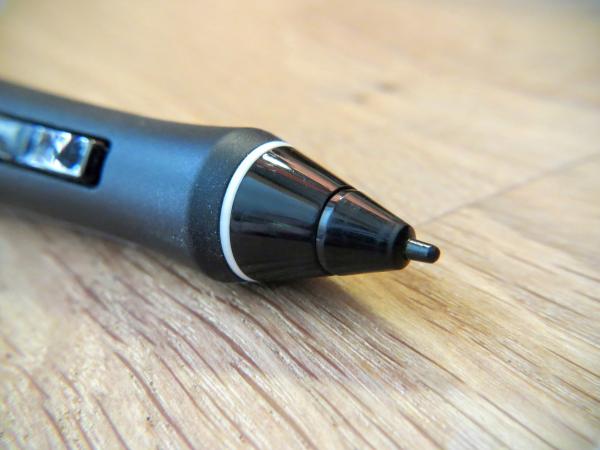
Perhaps the most important part of selecting an eSignature solution for your organisation is understanding exactly what an eSignature is – and is not - across the many differing types.
eSignatures come in a number of formats, each one offering a different level of convenience, security, legal potency and hardware/software requirements. It’s important when assessing whether an eSignature solution is right for your business that you consider who will use it, how they will use it and exactly what it will be used for. Across larger businesses, you may want to consider how each department or business function will use the systems you are assessing and whether any such systems will meet the requirements of all departments.
Take a look below to find out more about eSignatures.
Types of eSignatures
There are a number of types of eSignatures:
Typewritten
- Simply typing a name into a form field is considered to be an eSignature. This is a useful, but relatively insecure, method of capturing agreements. Typewritten signatures may also include checkbox agreements, such as those seen on websites.
Scanned
- A signature created by hand using a pen on paper can be scanned into a computer or other device using image capture apparatus (scanner, camera, etc). The captured image provides only a static representation of the signature provided. Worse, it can degrade legal proof as it is not an entirely original document and signature combination.
Static Captured Signature
- Static captured signatures use devices, such as Wacom pads or native pens, to capture a static image of the signature, placed directly onto a document or other digital file (including web files, such as HTML documents). More primitive methods use create once cut-paste whereas the better options use a newly captured signature for each transaction. The static image may be recorded along with various details such as date, time, user or location, amongst others. This may often have the advantage that there is nothing to download onto the target device.
Biometric Captured Signature
- In a similar method to other biometrics, such as fingerprints or retina scans, biometric captured signatures record measurements of the invisible characteristics of human attributes or behaviours; in this case the formation of the signature as well as the visible image of it. These measurements usually include the speed of transcription, the pen-hold angle, X-Y co-ordinates and downwards pressure force, as well as a range of other measures, all up to 200 times per second for each measurement. It is practically impossible for anyone to replicate or hijack biometric signature verifications, making this type of eSignature one of the strongest and most secure biometrics available.
eSignatures can also be complemented by other identity verification means, such as using additional biometrics or digital certificates. Clearly, the more measures used to verify a signature, the more robust the assurance.
eSignature quality
The quality of an eSignature is based largely on three factors:
- eSigned documents must contain a link from the signature and associated information through to the originator, allowing an authority to authenticate or verify the signature.
- Such signatures must also have a good level of integrity, usually this is provided through security features which allow change tracking and detection, as well as document locking and encryption to prevent changes to the information that was inside the file at the point of signing. The integrity of the signed document is key in the legal admissibility of any eSigned file – if there was a software capability which enabled changes to be made without invalidating the document, or even simply recording the changes, then there would be little to no assurance for signing parties.
- This feeds directly into the concept of non-repudiation; there must be a degree of legal satisfaction as to true identity of the signer and where the signature has come from. For example, a typewritten or checkbox signature could be provided by almost anyone, potentially on behalf of someone with permission or used in misrepresentation. A biometric signature, on the other hand, can be verified at the time of signing and revalidated at a later date to check the authenticity of the source of the signature.
The combined quality practically shows in terms of the relative strength of legal evidential weight, a more important factor than legal admissibility alone. Different uses cases may demand different proof points dependent upon value or risk concerned in each case. It is increasingly important across large organisations to use a single solution source capable of the flexibility demanded across all use cases and evidential weight requirements.
Common eSignature Use Cases
E-Signing assists workflow completion usually in three different kinds of environments:
- Face-to-face within a Store, Branch or Office. The systems here are often utilising fixed devices as the core of higher volume signing, possibly supplemented by Manager’s enabled with tablets.
- Mobile, such as a field sales person or surveyor or engineer, typically using a tablet or smartphone. These may have specialist pens or native stylus/pens associated with the devices.
- Remote, online signing such as a consumer from home or office worker in a procurement role. This web-based experience requires minimum technology in the users hands other than a web interface. It may however also need a secondary device such as a mobile to validate One Time Pass-codes or pass-words.
There is a wide range of choices. Making sub-optimal decisions means paying more and investing in a future headache, possibly due to unfit for purpose reasons discovered only when challenged or due to multiple different silo’d solution costs and complexity expansion, or other reasons.
Our advice is to get knowledgeable advice. Of course an advanced specialist company, such as Icon UK, is happy to work with you to explore your eSignature options, helping you to decide which solution is best for your business. Just get in touch with us and leverage the knowledge of our expert consultants to work with you to achieve your goals.
|


 Connect with us on Linkedin
Connect with us on Linkedin 


 Connect with us on Linkedin
Connect with us on Linkedin 

![]()
![]()
![]()